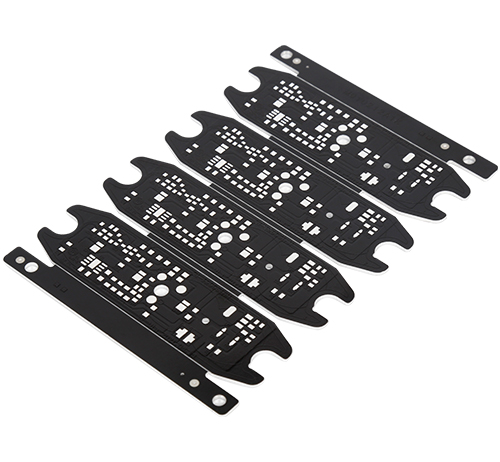Time:2022-09-06 Visit:
Choose a material with a low dielectric constant (Dk): Since the Dk loss increases proportionally with frequency, it is necessary to choose a material with as low a dielectric constant as possible;

Use a small amount of solder mask: Most solder masks are highly hygroscopic. If this happens, high losses may occur in the circuit;
Use perfectly smooth copper traces and floorplans: In fact, the current skin depth is inversely proportional to frequency, so on 5G PCB boards with high frequency signals, the skin depth is very shallow. An irregular copper surface will provide an irregular path for current flow, increasing resistive losses.
Signal Integrity: High frequencies are one of the most difficult challenges facing IC designers. To maximize I/O, high-density interconnects (HDIs) require thinner traces, which can lead to signal degradation that can lead to further losses. These losses can adversely affect the transmission of RF signals, potentially delaying several milliseconds, causing problems in the signal transmission chain. In the high frequency domain, signal integrity is almost entirely based on examining impedance.
Traditional PCB manufacturing processes, such as subtractive processes, have the disadvantage of creating tracks with trapezoidal cross-sections (compared to the vertical to the track, which is typically between 25 and 45°). These cross-sections change the impedance of the track itself, severely limiting 5G applications. However, this problem can be solved by using mSAP (semi-additive manufacturing process) technology, which allows the creation of more precise traces, allowing the trace geometry to be defined by lithography.
Automated Inspection: 5G PCBs for high frequency applications require automated inspection procedures performed either by optical (AOI) or by ATE. These procedures can greatly improve the quality of the product, highlighting possible errors or inefficiencies in the circuit. Recent advances in the area of automated inspection and testing of PCBs have resulted in significant time savings and reduced costs associated with manual verification and testing. The use of new automatic detection techniques will help overcome the challenges posed by 5G, including global impedance control in high-frequency systems. The increasing adoption of automated inspection methods also enables consistent performance at high productivity.